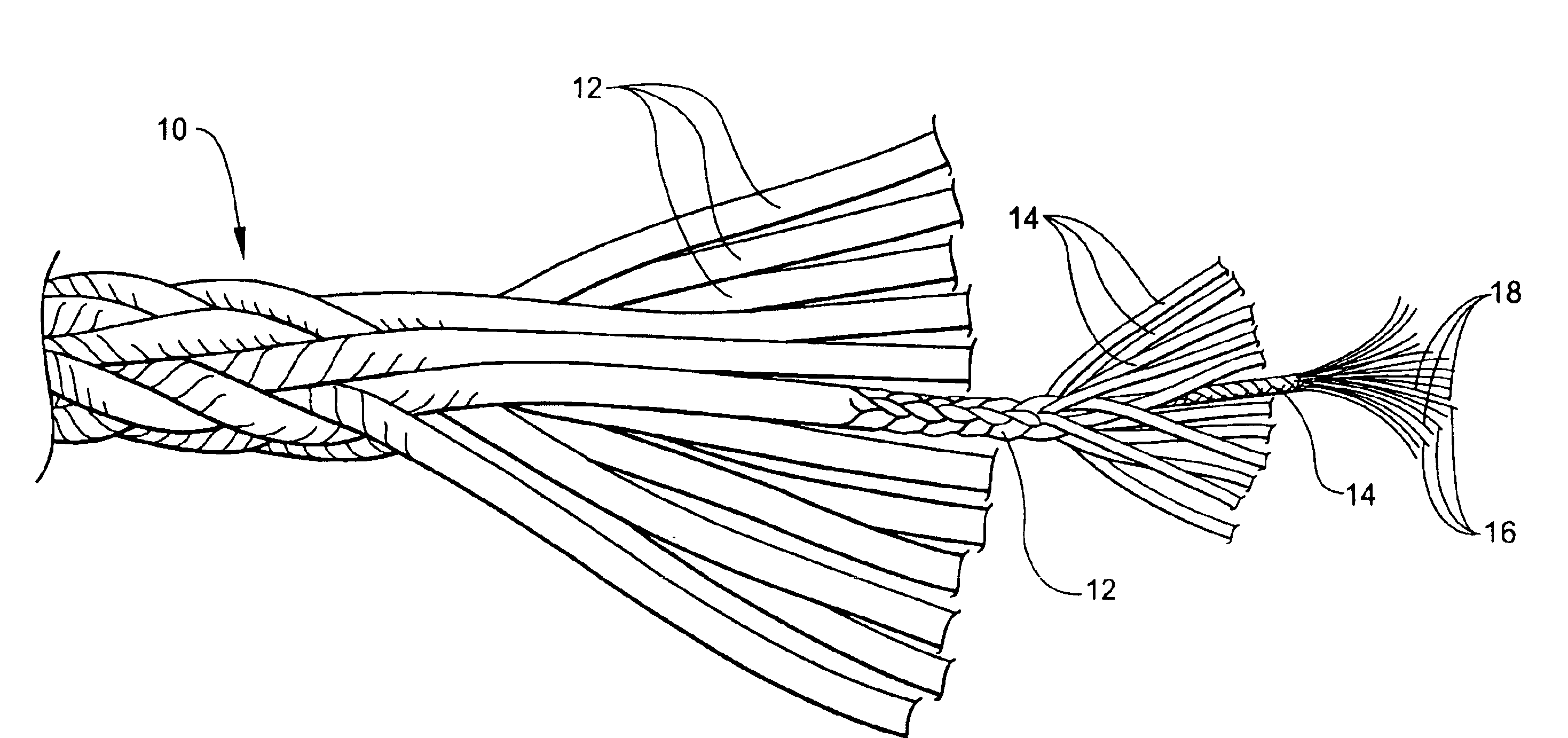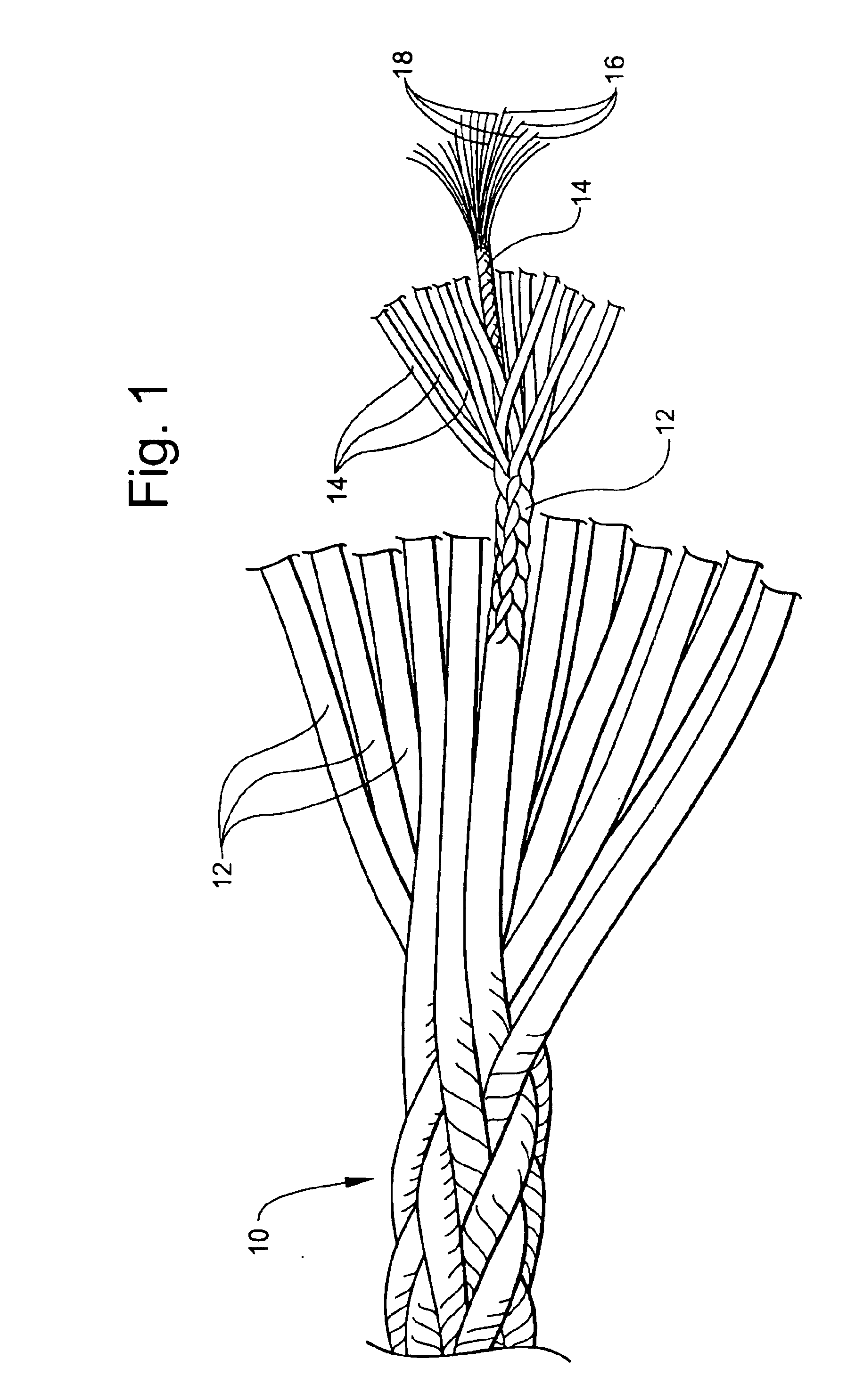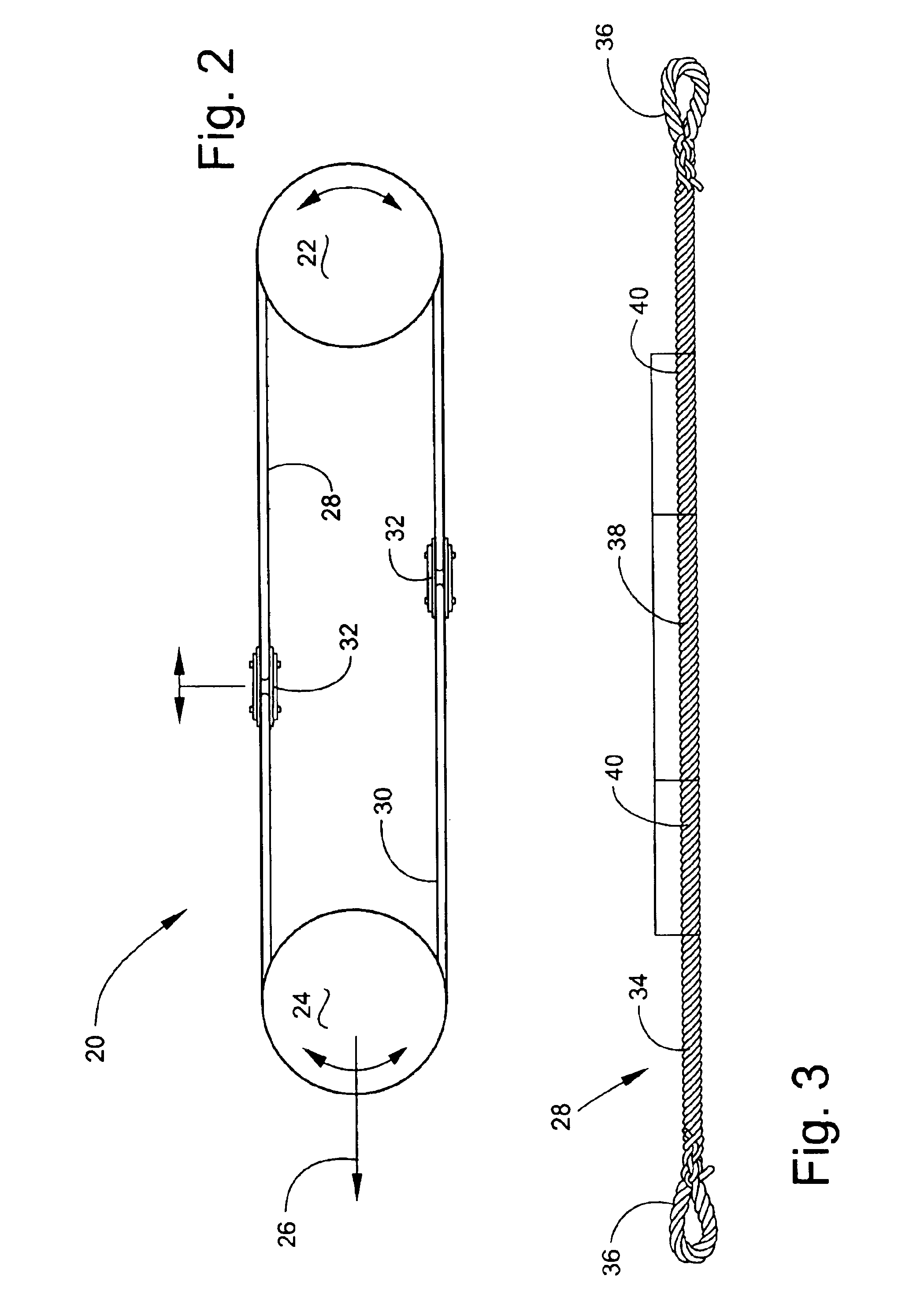Rope for heavy lifting applications
a technology for ropes and moorings, applied in the direction of braids, dyeing processes, textiles and papermaking, etc., can solve the problems of catastrophic failure of ropes, fiber material losing a substantial amount of strength, and damage that leads to rope failure, etc., to improve fatigue life.
- Summary
- Abstract
- Description
- Claims
- Application Information
AI Technical Summary
Benefits of technology
Problems solved by technology
Method used
Image
Examples
Embodiment Construction
[0018]Referring to the drawings wherein like numerals indicate like elements, there is shown in FIG. 1 a large diameter rope 10. The large diameter rope refers to ropes with a diameter greater than 40 mm (1.5 inches), preferably greater than or equal to 50 mm (2.0 inches), and most preferably greater than or equal to 75 mm (3.0 inches).
[0019]Rope refers to braided ropes, wire-lay ropes, and parallel strand ropes. Braided ropes are formed by braiding or plaiting the ropes together as opposed to twisting them together. Braided ropes are inherently torque-balanced because an equal number of strands are oriented to the right and to the left. Wire-lay ropes are made in a similar manner as wire ropes, where each layer of twisted strands is generally wound (laid) in the same direction about the center axis. Wire-lay ropes can be torque-balanced only when the torque generated by left-laid layers is in balance with the torque from right-laid layers. Parallel strand ropes are an assemblage of...
PUM
| Property | Measurement | Unit |
|---|---|---|
| diameter | aaaaa | aaaaa |
| diameters | aaaaa | aaaaa |
| diameter | aaaaa | aaaaa |
Abstract
Description
Claims
Application Information
 Login to View More
Login to View More - R&D
- Intellectual Property
- Life Sciences
- Materials
- Tech Scout
- Unparalleled Data Quality
- Higher Quality Content
- 60% Fewer Hallucinations
Browse by: Latest US Patents, China's latest patents, Technical Efficacy Thesaurus, Application Domain, Technology Topic, Popular Technical Reports.
© 2025 PatSnap. All rights reserved.Legal|Privacy policy|Modern Slavery Act Transparency Statement|Sitemap|About US| Contact US: help@patsnap.com



